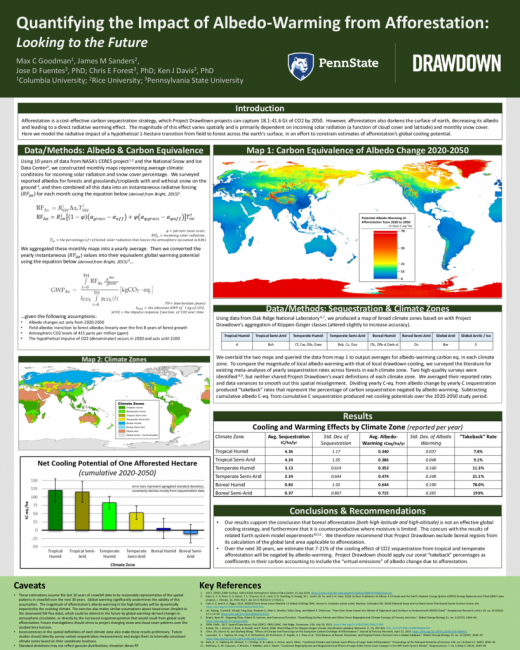The IPCC’s 2018 special report emphasizes the necessity of large-scale biological carbon sequestration, in addition to rapid emissions reductions, to restrain global warming to 1.5 ֯ Celsius. While afforestation is a popular, scalable, and cost-effective biosequestration strategy, it also reduces the earth’s overall shortwave albedo (reflectivity). The magnitude of afforestation’s albedo-warming effect varies by location, potentially offsetting some or all of the cooling from CO2 sequestration (several earth system model experiments have indicated that high-latitude afforestation could even lead to accelerated global warming). Project Drawdown’s methodology does not yet account for these spatially variable albedo effects, and therefore runs the risk of significantly overestimating the global cooling potential of afforestation. Using global snow cover, irradiance, and land surface data derived from NASA and NOAA radiometric sensing, we map the estimated albedo-derived radiative forcing potential of a hypothetical shift from degraded cropland to forest plantations across the earth’s surface. These values are then time-integrated to 2050 and converted to equivalent CO2 emissions. Finally, using ArcMap’s zonal statistics tool, in conjunction with regional carbon sequestration rates, we produce a table of “albedo takeback” coefficients for afforestation’s 2050 cooling effect in each of Project Drawdown’s thermo-moisture zones. While this analysis fails to account for future changes in cloud and snow cover, it serves as a methodological proof-of-concept for future efforts to integrate the albedo effects of land use change into Project Drawdown’s analysis.
Day
Monday Poster Session
Related Conference Themes
Built Environment
Land Use


